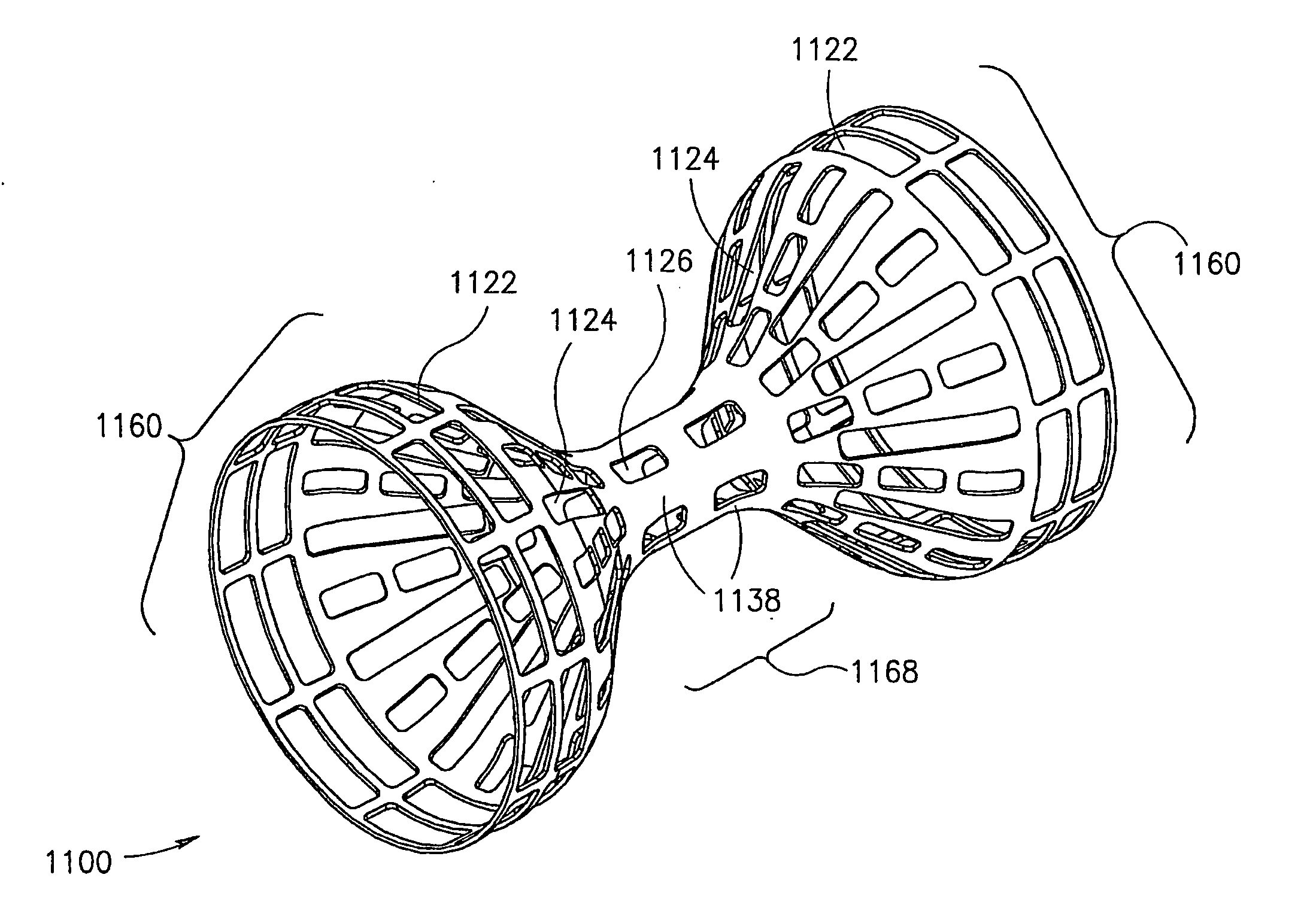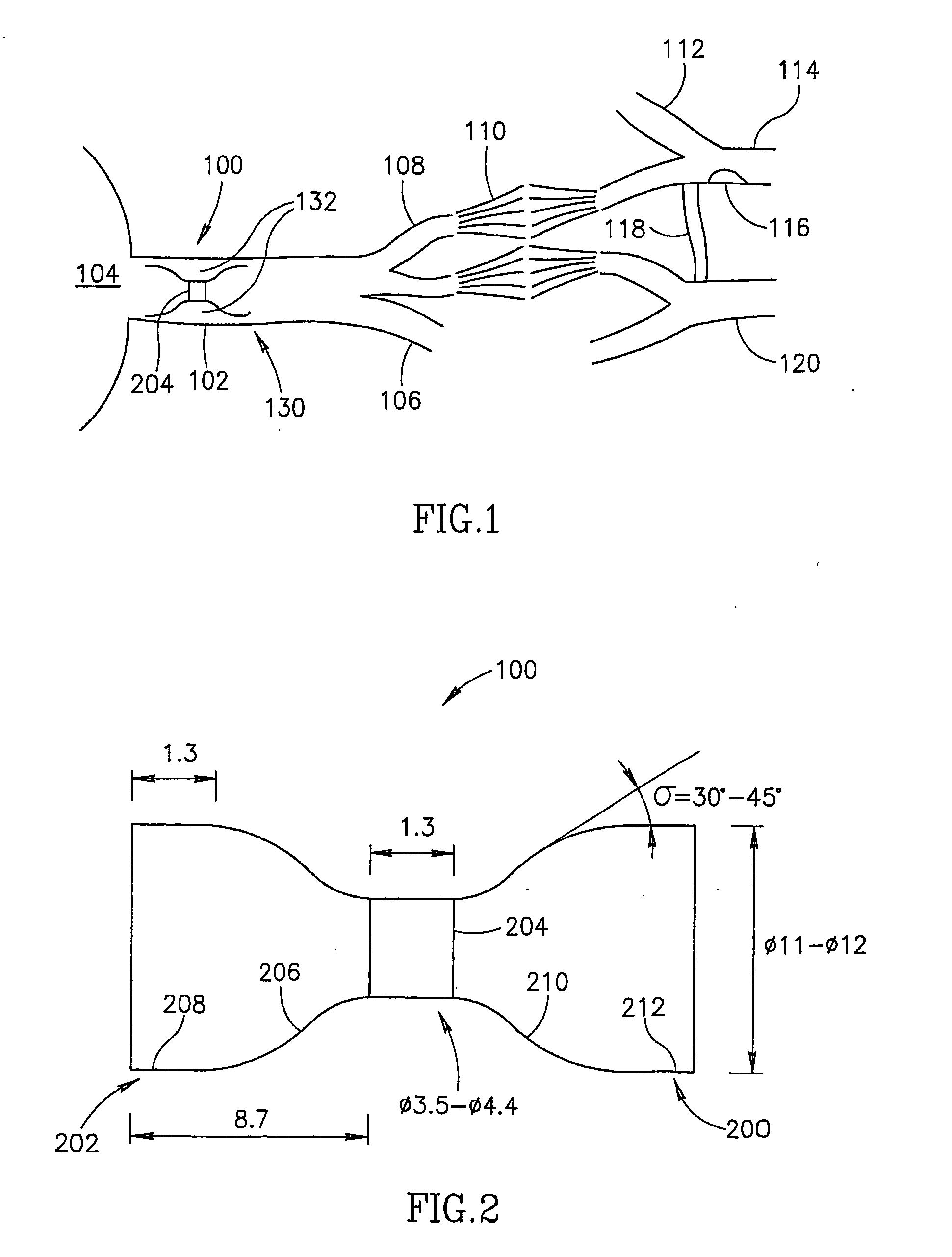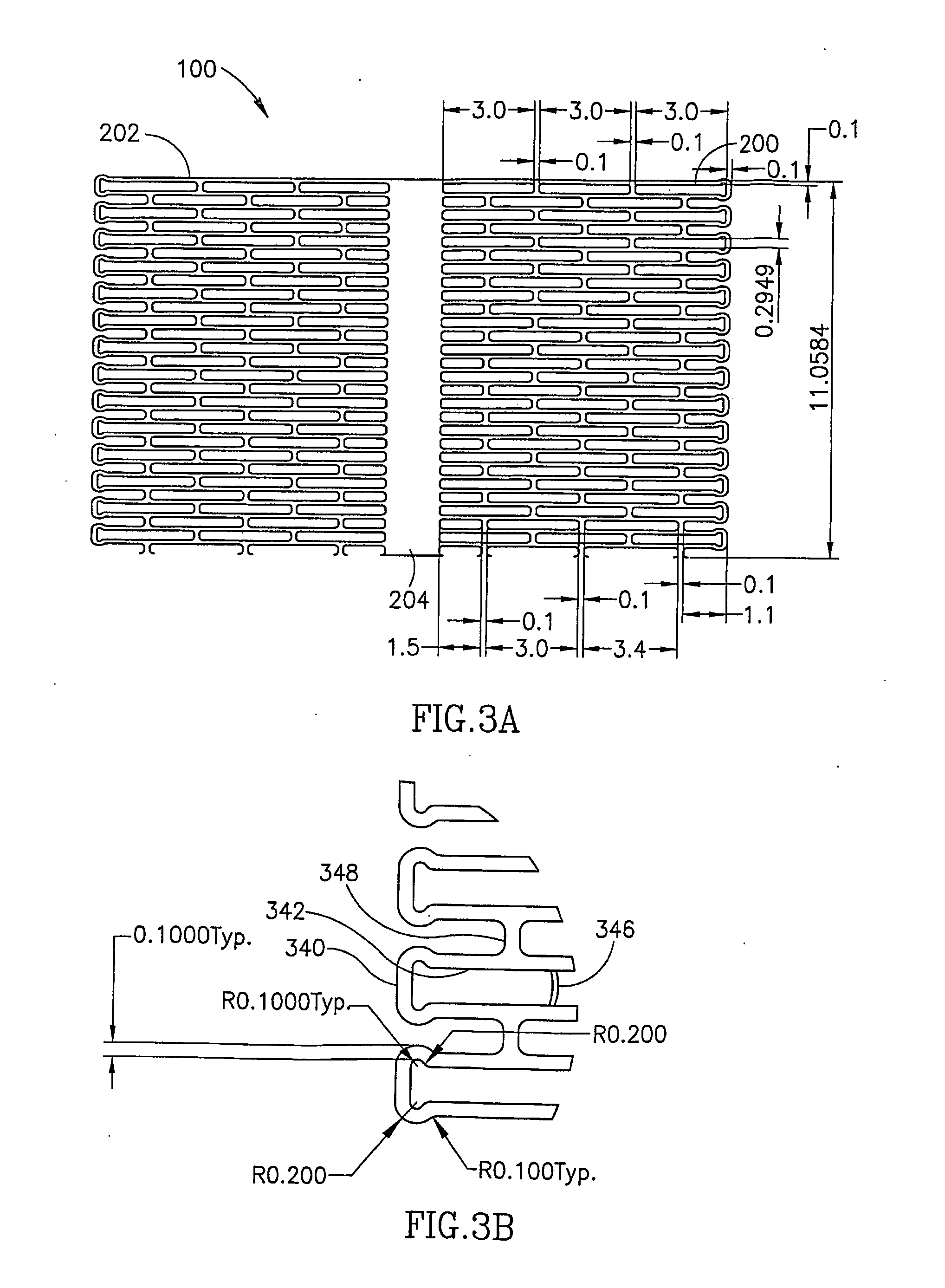Flow reducing implant
- Summary
- Abstract
- Description
- Claims
- Application Information
AI Technical Summary
Benefits of technology
Problems solved by technology
Method used
Image
Examples
Embodiment Construction
[0125]FIG. 1 is a schematic showing of a flow reducing implant 100 installed in a coronary sinus vein 102, in accordance with an exemplary embodiment of the invention. Coronary sinus 102 drains a plurality of cardiac veins 106 into a right atrium 104. The cardiac circulation is generally hierarchical and comprises of stages of reducing (or increasing) diameter. Thus, veins 106, in turn, drain a plurality of thin venoules 108, which, after a few stages, drain a plurality of capillaries 110. Capillary 110 is fed by a plurality of arterioles 112, which, after a few stages, are fed by a plurality of coronary arteries 114 and 120. A stenosis 116 is shown in a coronary artery 114. While the cardiac circulation is generally hierarchical, some connection exists between different branches. Occasionally, the existence of stenosis 116 will cause a collateral connection 118 to spontaneously form (or widen an existing connection) between coronaries 114 and 120, bypassing stenosis 116.
[0126] In ...
PUM
 Login to View More
Login to View More Abstract
Description
Claims
Application Information
 Login to View More
Login to View More - R&D
- Intellectual Property
- Life Sciences
- Materials
- Tech Scout
- Unparalleled Data Quality
- Higher Quality Content
- 60% Fewer Hallucinations
Browse by: Latest US Patents, China's latest patents, Technical Efficacy Thesaurus, Application Domain, Technology Topic, Popular Technical Reports.
© 2025 PatSnap. All rights reserved.Legal|Privacy policy|Modern Slavery Act Transparency Statement|Sitemap|About US| Contact US: help@patsnap.com



